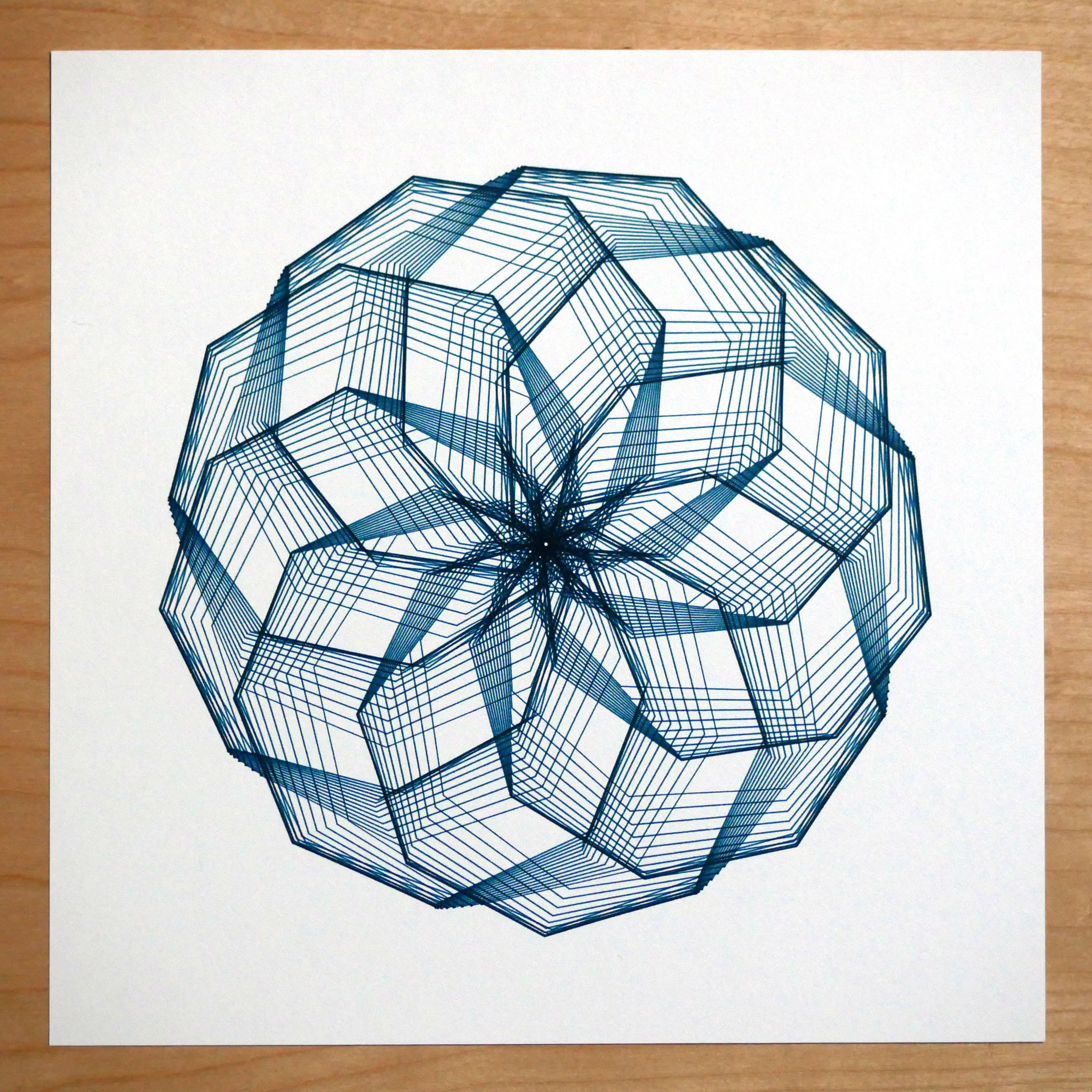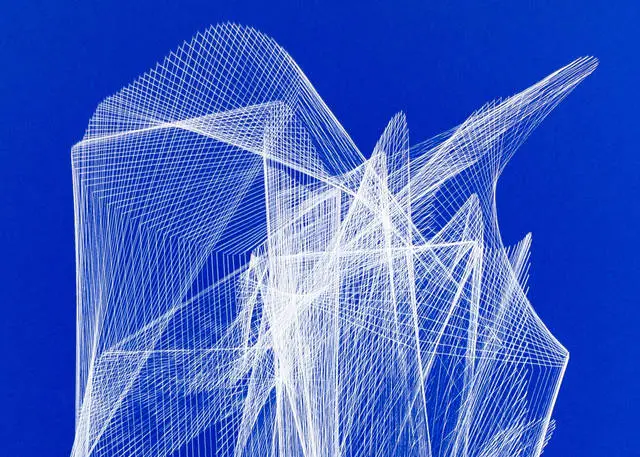The Power Of Generative Art: Creative Coding For Developers

Executive Summary

Generative art harnesses the potential of random algorithms and computation to create unique and fascinating visual outputs. For developers, exploring generative art presents an exciting opportunity to merge creativity with coding skills, embracing a new form of artistic expression powered by technology.

Introduction
Traditionally the domain of visual artists, generative art is making waves within the development community. By leveraging computation and the inherent nature of code to introduce randomness, developers can generate captivating artworks that push the boundaries of creativity.
1. Mastering Algorithms:
Generative art places algorithms at the cornerstone of the creation process. Developers dive into the realm of computational logic, employing concepts such as perlin noise, cellular automata, and fractals. Understanding algorithm behavior empowers them to craft visual patterns that exhibit organic growth, chaotic beauty, and intricate structures.
- Variables: Manipulating variables within algorithms allows for fine-tuning outcomes, influencing parameters like branching, curvature, and density.
- Data Manipulation: By feeding data or images into algorithms, developers can transform real-world elements into abstract forms, fostering creative exploration.
- Randomization Techniques: Introducing controlled randomness using techniques like Monte Carlo methods or seed randomization injects unpredictability into the process, leading to unexpected and unique results.
2. Harnessing Creative Coding Libraries:
Generative art thrives in digital ecosystems, benefiting from a plethora of open-source libraries. p5.js emerges as a favorite among developers, offering an intuitive JavaScript interface. Other popular options include Processing for its accessible syntax and OpenFrameworks for its C++ foundation.
- Sketching Tools: These libraries provide a visual workspace for sketching and prototyping visual ideas, akin to a digital canvas.
- User Interaction: Libraries enable developers to incorporate user input, making generative art responsive and engaging.
- Exporting Artwork: Seamless exporting options allow for sharing artwork in various formats, preserving unique creations for further exploration.
3. Exploring Visual Forms:
Generative art encompasses a vast spectrum of visual forms. From abstract geometric patterns to natural textures and fluid simulations, developers leverage coding to create mesmerizing artworks that cater to diverse tastes.
- Geometry and Patterns: Algorithms can generate intricate geometric shapes, tessellations, and patterns inspired by nature’s inherent order and complexity.
- Nature and Landscapes: By mimicking natural processes such as erosion, growth, and flocking behavior, generative art evokes the essence of ecosystems and landscapes.
- Data Visualization: Raw data transforms into mesmerizing visual representations, revealing patterns and insights hidden within complex datasets.
4. Fostering Community and Inspiration:
The generative art community flourishes online, fostering collaboration and inspiration. Platforms like OpenProcessing and Glitch allow developers to share code and creations, fostering experimentation and learning.
- Online Galleries: Online galleries showcase a myriad of generative artworks, offering a source of inspiration and appreciation.
- Tutorials and Resources: Abundant online resources, including tutorials and workshops, provide a gateway to generative art for aspiring creators.
- Community Events: Hackathons, meetups, and exhibitions bring together generative art enthusiasts, promoting knowledge sharing and collaboration.
5. Exploring Applications:
Generative art transcends the realm of aesthetics, finding practical applications in diverse fields. From algorithm-driven designs to interactive installations, developers integrate generative principles to enhance user experiences and foster innovation.
- Design and Aesthetics: Generative patterns adorn websites, branding materials, and products, creating visually stunning and memorable experiences.
- Game Development: Procedural generation of levels, characters, and textures in games adds depth, variety, and replayability.
- Interactive Installations: Generative art transforms physical spaces into immersive experiences, responding to user interaction and creating dynamic and responsive environments.
Conclusion
Generative art opens up a limitless realm of creativity for developers. By embracing algorithms, leveraging creative coding libraries, and exploring diverse visual forms, developers can harness computation to produce captivating and unique artworks. As the intersection of technology and artistry continues to evolve, generative art promises to inspire, engage, and leave an indelible mark on the digital and physical world alike.
Keyword Phrase Tags
- Generative Art
- Creative Coding
- Computational Creativity
- Algorithm-Based Art
- Digital Art

This discourse discusses a captivating realm where innovation and programming entwine to unleash the boundless potential of generative art. Its power lies in the convergence of technological expertise and a profound reverence for the aesthetic, stirring within us an introspective journey that unveils the intimate nexus between the creations we behold and the enigmatic processes that give rise to them.
While this post purports to illuminate the purported virtues of generative art, its arguments lack the rigor and depth befitting such a complex subject. The sweeping assertions and unsubstantiated claims leave me unconvinced of the merits of this approach. A more thorough and evidence-based examination is necessary to lend credence to the assertions made.
This article provides an intriguing glimpse into the realm of generative art, introducing concepts such as creative coding and computational aesthetics. For the uninitiated, it offers a valuable entry point, piquing their curiosity and inspiring further exploration. However, one might argue that a more comprehensive treatment could delve deeper into the technical aspects and showcase practical applications.
The notion that generative art can rival the creative output of human artists is, at best, a bold claim. While technology has undoubtedly expanded our artistic toolkit, the idea that it can supplant the unique emotional depth and nuance that human creativity brings to art seems far-fetched. The suggestion that generative art is inherently superior to traditional forms of artistic expression is not only arrogant but also overlooks the profound value of human imagination and interpretation.
Oh, how I marvel at the groundbreaking concept of generative art! It’s almost as if artists have never used tools or techniques to create their works before. The idea that coding and algorithms can somehow elevate art to a new level of sophistication is simply laughable. Let us not forget that true artistic brilliance stems from the human soul, not from the cold, unfeeling realm of computers.
Well, well, well, look who’s trying to pass off computer-generated doodling as high art. Sorry to burst your bubble, but generative art is nothing more than a glorified screensaver. It may be visually appealing, but it lacks the depth, emotion, and authenticity that make real art truly captivating. Don’t be fooled by the hype; generative art is just the latest fad, destined to fade into obscurity as quickly as it emerged.
Imagine if your favorite painting came to life and started dancing to the tune of a kazoo. That’s basically what generative art is! It’s like having a pet robot that paints for you, except instead of a tail, it has a USB port. The possibilities are endless: you could create a portrait of your cat made entirely of bacon bits or a landscape that changes colors depending on the weather. The only limit is your imagination (and your coding skills).
Generative art is an interesting concept that offers a new way of thinking about art and creativity. It’s fascinating to see how computers can be used to create unique and beautiful works of art. However, it’s important to remember that generative art is still a relatively new field, and there is still much to be learned about its potential. I’m excited to see what the future holds for generative art, and I believe that it has the potential to make a significant contribution to the world of art.
Meh. I’ve seen better art on a refrigerator door. Generative art is just a bunch of random shapes and colors thrown together by a computer. It’s not real art. Real art comes from the heart and soul of the artist, not from a bunch of code.
I’m intrigued by the concept of generative art, but I’m not entirely sure how it works. Can someone explain it to me in a way that a non-programmer can understand?
Generative art is the future of art! It’s amazing how computers can be used to create such beautiful and unique works of art. I can’t wait to see what artists do with this new technology.